6 days Christian Pilgrimage tour in Nagasaki region
The tour visits Christian Pilgrimage sites in Nagasaki, Sotome, Shimabara and Unzen
Japanese Christianity has a Unique history of continuing faith while coexisting with
Japanese traditional religion Shinto and General society. Japan’s unique practice of
the Christian faith continued even during the Ban on Christianity.
Hidden Christian site in Nagasaki region bear unique testimony to the tradition of
people and their communities who secretly transmitted their faith in Christianity while
surviving in the midst of the conventional society and its religions during the time of
prohibition.
How to travel
The Private vehicle is used as for transportation and Tour guide is used for making
pleasant travel in accordance with the Itinerary.
When you have an idea or a plan for traveling in Kyushu, Japan, please contact us
by sending an Enquiry.
Enquiry form, please click the link below and write your enquiries.
↓ ↓
Where to visit
| Schedule places to be explored | Stay |
|
Day 1 : Depart from Fukuoka → Nagasaki Day 2 : Nagasaki Day 5 : Hirado |
Itinerary
Day 1 Nagasaki
Christianity in Japan spread mainly from Nagasaki, and Nagasaki a microcosm of Japanese
Christianity history.
Nagasaki Port was opened and the first Portuguese ship arrived in 1571. And development of the
town of cape was started as Christian town in 1571 and many Churches were constructed in
Nagasaki. However, due to proclamation of Christian ban by Toyotomi shogunate in 1587,
people secretly continued to faith while surviving in the midst of the conventional society and
Japanese religions. And many Christians were also martyred during this period.
Schedule
Welcome to Fukuoka, you will be greeted our representative.
=== Drive to Nagasaki using Expressway, 2 hours ===
Lunch at Nagasaki
Visit Hongouch Church and Saint Kolbe Memorial Museum
Go to top of Mount Inasa using the Slope car
Enjoy the magnificent view of Nagasaki from 333 meters sumint
Own dinner at the restaurant in Nagasaki
Stay in Nagasaki
 |
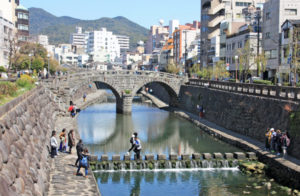 |
 |
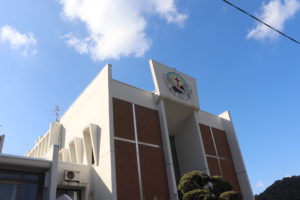 |
 |
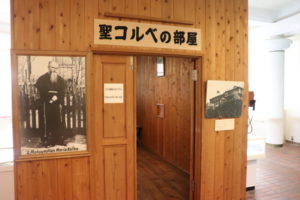 |
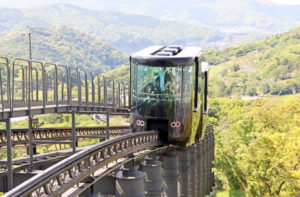 |
 |
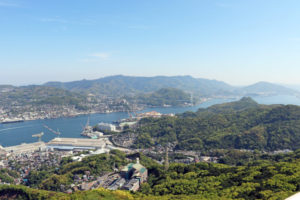 |
Day 2 Nagasaki
26 Saints were the first martyrs in Japan.
26 Christians arrested in Kyoto and they walked from Kyoto to Nagasaki in January and February 1597.
How great were the physical and mental suffering of those 26 men who were forced to march all the
way from Kyoto to Nagasaki during these cold winter days, and they all ascended to heaven at
Nishizaka Hill on Februay 05.
Schedule
Breakfast at the Hotel
Visiting Pilgrimage sites in Nagasaki
Martyrdom of 26 Saints of Japan
Lunch at local restaurant in Nagasaki
Own dinner at the restaurant in Nagasaki
Stay in Nagasaki
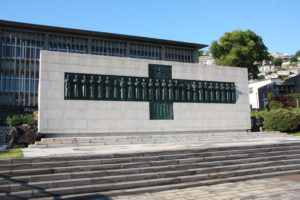 |
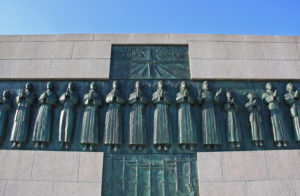 |
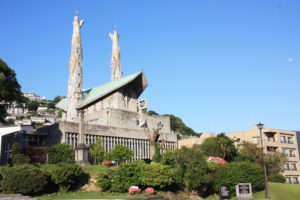 |
 |
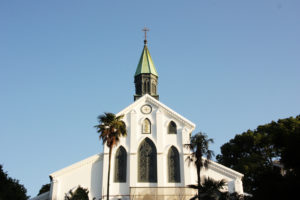 |
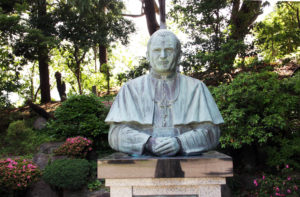 |
 |
 |
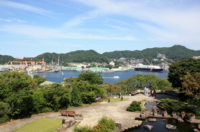 |
Sotome was home to communities of “Hidden Christians”, during the ban on Christianity
from 17 century to end of the 19 century, many of whom emigrated there from other parts
of Nagasaki as the remote region allowed them to practice their religion in secret.
French missionary Father Marc Marie de Rotz played a large role in reestablishing the
religion in the area.
Schedule
Breakfast at the Hotel
|
Visiting the places for World Peace, the Atomic Bomb dropped in 1945 ・Peace Park ; Peace Statue, Peace Fountain === Drive to Sotome, 1 hour === Lunch at Sotome Drive to Nagasaki Own dinner at the restaurant in Nagasaki Stay in Nagasaki |
Optional site to be visited |
 |
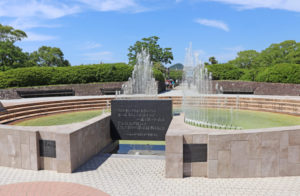 |
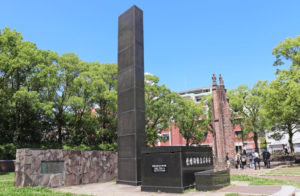 |
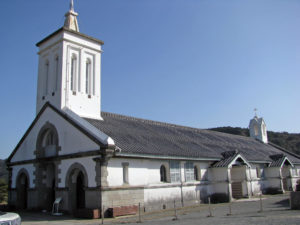 |
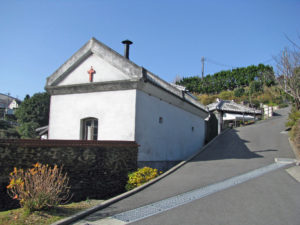 |
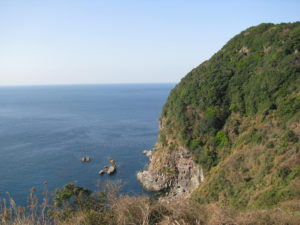 |
 |
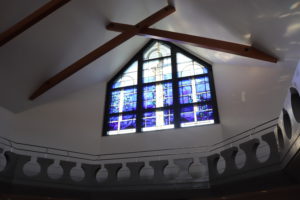 |
 |
Harajo Castle ruins in Shimabara is the Battle field of Shimabara Rebellion which was a peasant
uprising agaist bakufu’s persecution of Christians under the leadership of Amakusa Shiro in 1637.
Unzen was a martyrdom site where was once put into reality nearly 350 years ago during the time
of religious persecution in Japan. 30 Japanese Christians, failing to renounce their faith met their
death here in the scalding spring of Jigoku.
|
Schedule After breakfast, check out of the Hotel in Nagasaki === Drive to Shimabara, 1 hour and 30 minutes === Holy Mary-Kannon of Harajo Castle Lunch, local cuisine === Drive to Unzen, 30 minutes === Dinner at the Hotel Stay in Unzen |
Optional site to be visited |
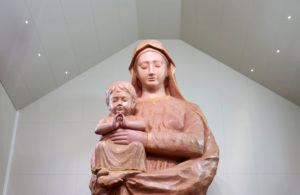 |
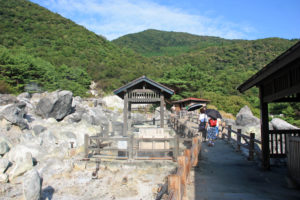 |
 |
Day 5 Hirado
Hirado is the first place where Portuguese ships landed in Japan in 1549, and after that
St. Francis Xavier visited in 1550, and Japanese Christianity started here in Hirado.
|
Schedule After breakfast, check out of the Hotel in Unzen === Drive to Hirado, 2 hours 30 minutes ===
Lunch at Hirado, local cusine Exploring Hirado St Francis Xavier Memorial Church
Dinner at the Hotel Stay in Hirado |
Optional site to be visited |
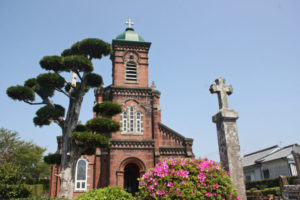 |
 |
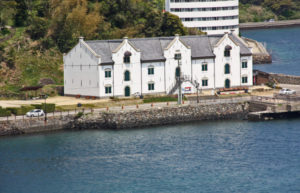 |
During Ban on Christianity, people secretly continued to faith while surviving in the midst of the
conventional society and Japanese religions. And many Christians were also martyred during
this period.
Schedule
After breakfast, check out of the Hotel in Hirado
Exploring Hirado
Kurose no Tsuji, martyrdom site of Gaspar Nishi Genka
Lunch in Hirado
Nakae no Shima Island Martyrdom site observatory place
=== Drive to Fukuoka, 2 hours and 30 minutes ===
Arrive at Fukuoka, end of the tour
 |
 |
 |
Traveling route

Christian Pilgrimage tour in Nagasaki region
Japanese Christianity has a Unique history of continuing faith while coexisting with
Japanese religion and general society.
This is a Package tour visiting Christian sites such as Churches & Cathedrals and
Christian Pilgrimage sites including museums.
The Package consist of consist of Private vehicle, Accommodation, Tour guide,
entrance fees for Churches & Cathedrals, arrangement of Mass as well as Meals.
 |
 |
 |
When you have an idea or a plan for Christian Pilgrimage tour, Japan, please contact us
by sending an Enquiry.
Enquiry form, please click the link below and write your enquiries.
↓ ↓
We will be delighted to create a proposal exclusively and expressly for you.
Model Itinerary
We have the following various model Itineraries to assisist in making your
Optimal Christian Pilgrimage tour.
6 days Christian Pilgrimage tour in Nagasaki region
The tour visits Christian Pilgrimage sites in Sotome, Nagasaki, Shimabara, Unzen
| Schedule places to be explored | Stay |
|
Day 1 : Depart from Fukuoka → Nagasaki Day 2 : Nagasaki Day 5 : Hirado Day 6 : Hirado → Fukuoka |
 |
 |
 |
8 days Christian Pilgrimage tour in Nagasaki and Amakusa regions
The tour visits Christian Pilgrimage sites in Hirado, Nagasaki, Sotome, Shimabara, Unzen
Amakusa, Kumamoto and Fukuoka.
| Schedule places to be explored | Stay |
|
Day 1 : Depart from Fukuoka → Hirado Day 2 : Hirado Day 3 : Nagasaki Day 6 : Amakusa Day 8 : Fukuoka |
 |
 |
 |
26 Saints Martyrs of Japan Pilgrimage tour
26 Saints are the first martyrs in Japan. The tour follows the pilgrimage routes
of 26 saints from Fukuoka to Nishizaka. And also visit the relating places of 26 Saints.
 |
 |
 |
Christian history in Japan was started when Francis Xavier came to Japan as
a first Christian missionary in 1549. Then Christianity was spread in Nagasaki region.
However, unparalleled Hidden Christian history was started from when Tokugawa Ieyasu
Shogunate proclaimed ban on Christianity in 1614. After that, people secretly continued
to faith while surviving in the midst of the conventional society and Japanese religions
as Hidden Christian.
Since prohibition of the Christianity was lifted in 1873, new Christian history in Japan
has begun.
 |
 |
Home Our Services Tailor-made guided tour Christian Pilgrimage tour Golf tour
Kyushu Travel Guide Kyushu Photo Collection Off the beaten path What our Customers have to say
Christian Pilgrimage sites in Nagasaki Region
Hidden Christian site is registered on UNESCO’s World Heritage. Japanese Christianity has
a unique history of continuing faith while coexisting with Japanese traditional religion Shinto and
General society. Japan’s unique practice of the Christian faith continued even during the ban
on Christianity. Hidden Christian Site in Nagasaki, Shimabara , Hirado and Amakusa Regions
bear unique testimony to the tradition of people and their communities who secretly transmitted
their faith in Christianity while surviving in the midst of the conventional society and its religions
during the time of prohibition.
Oura Cathedral / UNESCO World Heritage
Basilica of Martyrdom of the 26 Saints of Japan. Built in 1865 under the supervision of the French
priest Bernard Petitjean. It was designated as a National Treasure in 1933 for its value as Japan’s
oldest Gothic-style Cathedral.
Martyrdom of the 26 Saints of Japan
Sotome area Hidden Christian Site / UNESCO World Heritage
Sotome is located between Nagasaki-city and Saikai-city, and face to East China Sea.
During the ban on Christianity from 17 century to end of the 19 century, Sotome was
home to communities of “Hidden Christians”, many of whom emigrated there from
other parts of Nagasaki as the remote region allowed them to practice their religion
in secret. French missionary Father Marc Marie de Rotz played a large role in
reestablishing the religion in the area. He established Shitsu Church on a hill
overlooking the sea.
Originally constructed in 1895 as a brick Romanesque building, after a long-standing ban on
Christianity was lifted. When completed in 1914, it was the largest Catholic church in East Asia.
The atomic bomb dropped on August 9, 1945 explored in Urakami, only 500m from the cathedral,
which was completely destroyed. What remained of the cathedral is now on display in the
Atomic Bomb Museum.
Hara Castle Ruins / UNESCO World Heritage
The Battle field of Shimabara Rebellion which was a peasant uprising agaist bakufu’s persecution
of Christians under the leadership of Amakusa Shiro in 1637. Christian farmers rose in a riot due
to their grievance about the oppression by Matsukura Shigemasa. The Shogunate regarded this
riot as Christian rebellion and sent its punitive force, therefore locked themselves in the castle and
with their leader Amakusa Shiro Tokisada fought against the Shogunate. On February 27, 1638,
he died in battle. The following day, the castle fell. 37,000 Christians including women and children
died a violent death.
Hory Mary-Kannon of Hara Castle, in Minami-Shimabara
The world’s tallest wooden Holy Mary statue, with 10 meters in height.
This statue was made by sculptor Oyamatsu Eiji over a period of 40 years and was completed
when he was 90 years old.
The statue is located in Minami-Shimabara-city, 10 minutes drive from Hara Castle Ruins,
 |
 |
 |
Jigoku, means Hell, is the number one attraction of Unzen with a peculiar smell of sulfur emitted
from the springs, and with white smoke rising from the ground over a wide area.
Unfortunately, this was once put into reality nearly 350 years ago during the time of religious
persecution in Japan. 30 Japanese Christians, failing to renounce their faith met their death
here in the scalding spring of Jigoku.
Christianity in Hirado
When the religion was banned in the early Edo Period, and the Christians were forced to give up their
religion, a few believers, known as the “Hidden Christians”, continued to practice their religion in secret
for over two centuries. Some did so in the remote villages of Hirado Island.
In the late 1800s, the ban on Christianity was lifted, and many of the Hidden Christians rejoined the
Catholic Church and built new churches with the assistance of foreign priests. A few also refrained from
rejoining because their religious practices evolved quite a bit over the centuries to a degree where they
were not compatible with Catholicism anymore.
Nakae no Shima / UNESCO World Heritage
Located two kilometers off the coast of Hirado Island, Nakae no Shima is a small, uninhabited island
where religious leaders were executed during the persecution of Christians. The island is considered
sacred, and water collected there is used for baptism.
 |
 |
 |
Kasuga Village / UNESCO World Heritage
This idyllic, remote village was refuge to a small community of Hidden Christians who practiced here
for centuries, far from the prying eyes of the government. After the ban on Christianity was lifted, the
local villagers decided to continue practicing their own unique brand of the religion rather than rejoin
the Catholic Church. As a result, churches were not erected in the village, and the religion remains
outwardly invisible.
 |
 |
 |
Kurose no Tsuji, martyrdom site of Gaspar Nishi Genka
The site where Christian Gaspar Nishi Genka was martyred in 1609, located on
Kurose Hill overlooking Nakae no shima between Hirado and Ikitsuki.
The tomb facing the sea is called Gaspar-sama and is a revered place for Ikitsuki’s
Hidden Christians.
The cross-shaped “Kurose no Tsuji Martyrdom Monument” was erected by Catholics
in 1991, and Mass is held every year around November 14th.
 |
 |
 |
The church was designed by Tetsukawa Yosuke, a famous architect of various churches in
Nagasaki-prefecture, and built between December 1915 and October 1917. It is one of the latest
brick churches in the prefecture of Nagasaki. Tetsukawa Yosuke has called this one of his best works.
 |
 |
 |
Hidden Christian of Amakusa
Christianity was first brought to Japan in 1549 by a Jesuit priest named Francis Xavier when trading
opened in Kagoshima. Not long after, it spread to neighboring areas such as Nagasaki and Amakusa.
In 1614, the Tokugawa regime felt threatened by the growth of Christianity out of their fear of
colonialism. Persecutions began and the eradication of Christianity started. Missionaries and priests
alike were killed, while those who practiced Christianity were given an option to renounce their faith or
face death. Some chose to convert to Shintoism and Buddhism in order to hide their Christian faith.
Fed up with famine and cruel treatment, peasants from Amakusa organized a rebellion to fight against
the regime. This resulted in the Shimbara Rebellion, which is considered as one of the largest revolts
during the Edo period.
The oldest Catholic Church in Amakusa and was one of the first churches built right after the ban
on Christianity was lifted. The and Romanesque-style architecture and the chalky white structure
was rebuilt in 1933 by a French missionary priest named Father Garnier using his own money and
contributions from local Christians living in the area.
 |
 |
 |
Sakitsu Village / UNESCO World Heritage
A Gothic-looking church is located on a cove of a fishing village. In 1934, a French priest Augustin
Halbout MEP purchased the premises of the former village headman and built a wooden and
concrete finished church, with Tetsukawa Yosuke’s design and construction. He placed the altar
at the very site where fumie or a test to ensure non-allegiance to Christianity had been conducted.
 |
 |
 |
The theme Museum shows History of Christianity in Amakusa and Shimabara Rebellion
which was a peasant uprising against bakufu’s persecution of Christians under the leadership
of Amakusa Shiro in 1637.
 |
 |
 |
Home Our Services Tailor-made guided tour Christian Pilgrimage tour Golf tour
Kyushu Travel Guide Kyushu Photo Collection Off the beaten path What our Customers have to say
History of Japanese Christianity
Christian history in Japan was started when St. Francis Xavier came to Japan as a first Christian
missionary in 1549. Then Christianity was spread in Nagasaki region. However, unparalleled
hidden Cristian history was started from when Toyotomi Hideyoshi Shogunate proclaimed Christian
ban in 1587. During ban on Christianity, people secretly continued to faith while surviving in the
midst of the conventional society and Japanese religions.
Since ban on the Christianity was lifted in 1873, new Christian history in Japan has begun.
1549 St. Francis Xavier came Kagoshima Japan as a first Christian missionary and
commenced the Christian history in Japan
1550 St. Francis Xavier came Hirado as a Christian missionary
1551 Catholic Hirado Church was constructed as first church in Japan
1557 Introduction of Catholicism to Ikitsuki, Kasuga in Hirado
1563 Omura Sumitada, feudral lord of Nagasaki who was first lord convert to Christianity
1569 Todos os Santos Church was constructed as first in Nagasaki by Gaspal Villera
1571 Nagasaki Port was opend to Portugal by feudral lord Omura Sumitada
1580 Arima Harunobu, lord of Arima convert to Christianity and the Seminario was
established in Kuchinotsu as first in Japan
1582 Arima Harunobu teamed up with Kyushu Christian lords Otomo Sorin and ura Sumitada
to dispatch the Tensho Mission to the Pope in Rome
1587 Shogunate, Toyotomi Hideyoshi proclaimed Christian ban
1590 The Tensho Mission retured to Nagasaki
1597 The Twenty-Six Martyrs of Japan, were a group of Catholics who were
executed by crucifixion on February 5 at Nagasaki. Their martyrdom is especially
significant in the history of the Catholic Church in Japan.
 |
 |
 |
1603 Tokugawa Shogunate was established and the natioal isolation policy was applied
1614 The Tokugawa Shogunate prohibited Christianity throughout Japan
1622 five Christians were martyred at Nakae no Shima in Hirado
1624 three Christians were martyred at Nakae no Shima in Hirado
1627 twenty seven Christians were martyred at Unzen Jigoku
1637 Shimabara Rebellion : a peasant uprising against bakufu’s persecution of Christians
under the leadership of Amakusa Shiro
1637 Lorenzo Luiz from Philippines martyred at Nashizaka hill in Nagasaki
1641 Dejima, the small artificial island was opened as Dutch trading port in Nagasaki
1644 Last Christian missionary in Japan is martyred
 |
 |
 |
1853 Mathew C Perry came to Uraga; the Commodore of the US navy, who played a
significant role in Japanese history, succeeded in opening Japan to foreign countries
1854 Treaty between the USA and Japan : ending the isolation policy and opening the country
1858 Treaty of Amity and Commerce between USA, Netherlands, Russia, England, France and
Japan ; allow religious freedom in foreign residential areas
1862 The 26 Japanese Martyrs at Nishizaka Hill in Nagasaki were canonized by Pope Pius IX.
1865 Oura Cathedral was built as the basilica of Martyrdom of the 26 Saints of Japan
1868 Meiji Restoration, the most important event in Japanese history, which heralded a new era
of modernization in Japan. This revolution restored the imperial rule to Japan after more
than 250years of Tokugawa Shogunate
1873 Ban on the Christianity was lifted
1882 Shitsu Church in Sotome construction started by Father de Rotz’s design
1909 Shitsu Church was completed
1914 Urakami Cathedral construction was completed, it was the largest Catholic church in East Asia
at that time
1912 Yamada Church in Hirado was constructed
1917 Tabira Church in Hirado was constructed
1920 Kurosaki Church was completed by Father de Rotz’s design
1931 St. Francis Xavier Memorial Church in Hirado was constructed at the present location
1945 Atomic bomb dropped in Nagasaki on Aug. 9
The most part of Nagasaki was destroyed, and a tremendous number of lives were lost.
and Urakami Cathedral was completely destroyed.
About 73,000 died instantly, and up to 60,000 were injured.
 |
 |
 |
1950 Pope Pius XII designated the Nishizaka Hill in Nagasaaki of Martyrdom of 26 Japanese
Saints as an official Pilgrimage site for Catholics
1959 Urakami Cathedral replacement was built
1981 Pope John Paul II visited in Nagasaki
1982 Saint Teresa of Calcutta commonly known as Mother Teresa visited in Nagasaki
1987 Saint Lorenzo Ruiz was canonized by the same pope in the Vatican city on 18 October,
making him the first Filipino Saint
2000 Ebdo Shusaku ( novelist of Silence ) Literary Museum is opened in Sotome
2018 Hidden Christian site is registered on UNESCO’s World Heritage
 |
 |
 |
2019 Pope Francis visited Nagasaki on Nov.24 and and calls for a ‘world without Nuclear
Weapons’ at the Ground Zero.
Home Our Services Tailor-made guided tour Christian Pilgrimage tour Golf tour
Kyushu Travel Guide Kyushu Photo Collection Off the beaten path What our Customers have to say
Nagasaki Pilgrimage one-day tour
This is the model plan for making your customized tour.
The tour visits Christian Pilgrimage sites in Sotome and Nagasaki
while introducing the following:
How did Japan, whose main religion is Shinto, accept Christianity?
Why did Christianity spread in and around Nagasaki?
Why did Japan ban Christianity even though once accepted it?
How did Christians continue their faith during the ban period?
What kind of oppression and martyrdom took place during the ban on Christianity?
The customized tour is planned as per the following.
1) The tour starts from Fukuoka
・less than 7 persons : chartered taxi with English speaking driver
・more than 8 persons : chartered bus with Japanese speaking driver,
English speaking tour guide navigates the tour
3) Meals :Japanese cuisines, local specialities
Itinerary
|
|
8:00 Star the tour at the designated place in Fukuoka Dirive to to Nagasaki, 2 hours Visiting Sotome Pilgrimage site ; region was home to communities of Hidden Christians On an elevation commanding a view over the Sea of Goto, Father Marc Marie de Rotz established a church at his own expense 1882 The setting of Endo Shusaku’s novel Silence. Sotome is blessed with a unique history and culture of Christianity
Lunch at China Town
Exploring Peace Park where the Atomic Bomb dropped in 1945 Visit Atmic Bomb Museum, Ground Zero and Peace Statue
Martyrdom of the 26 Saints of Japan Nishizaka hill is the most significant Christian Pilgrimage site in Japan. The 26 Martyrs of Japan were a group of Catholics who were executed by crucifixion on February 5, 1597. The Cathedral is one of the significant Christian Pilgrimage site in Japan. Established 1865, this church is officially known as “Oura Cathedral, the Church of 26 Martyrs.”
Drive to Fukuoka, 2 hours 18:00 Arrive at Fukuoka, end of the tour |
Map of Nagasaki

Home Our Services About us Contact us Kyushu Travel Guide























